I Dig Sports
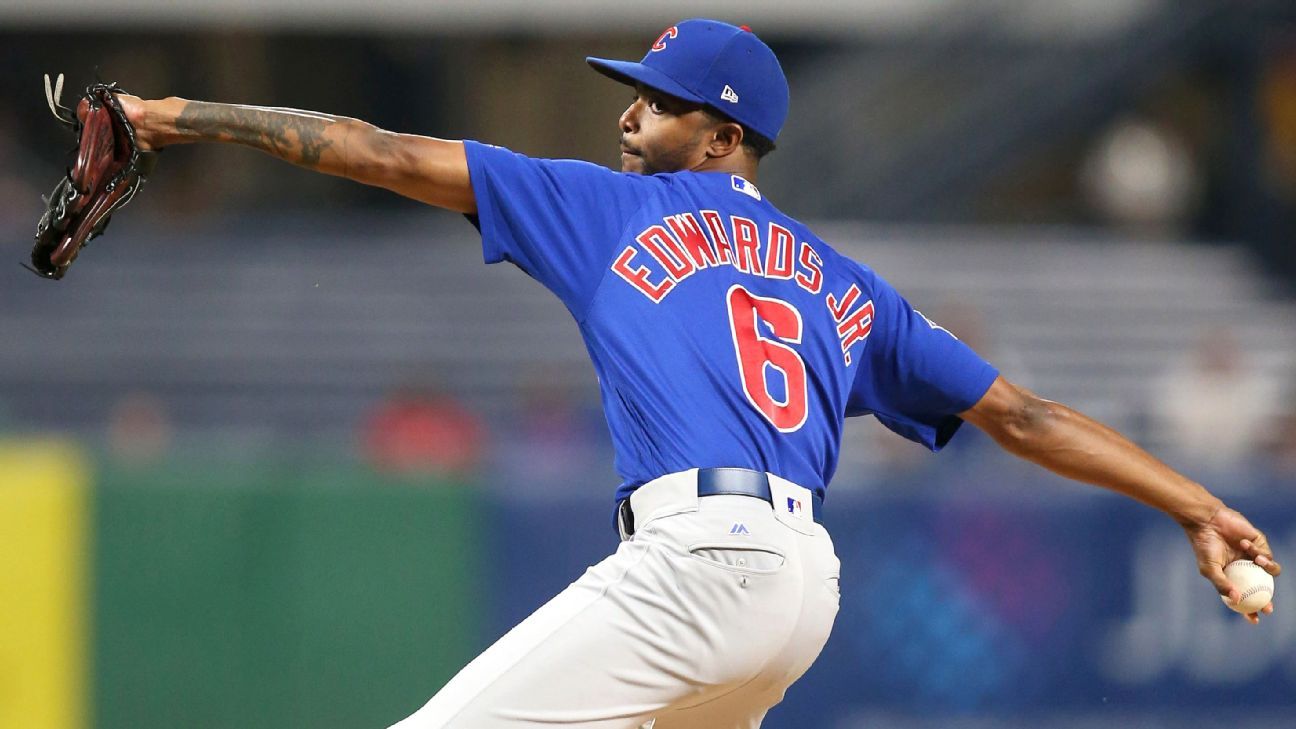
MIAMI -- Major League Baseball is investigating racist Instagram messages sent to Chicago Cubs pitcher Carl Edwards Jr., a league spokesperson confirmed Tuesday.
The team also reacted to the messages, which came after Edwards struggled in his first few appearances of the season before he was demoted to Triple-A Iowa.
"We were shocked by the racist, profanity-laced social media message sent to Carl Edwards Jr. earlier this month," team president Theo Epstein said in a statement. "We vehemently condemn the content of the message and are supporting Major League Baseball's investigation to identify the person responsible.
"In a sport that celebrates diversity and unites people from all backgrounds, we are appalled anyone claiming to be a fan would send divisive and bigoted insults to a player. Whether spoken, posted or published, this type of reprehensible language and views cannot be tolerated in our game or society."
Edwards, 27, was demoted after compiling a 32.40 ERA in four appearances this season.
"While he has mentioned being upset at social media attacks in the past, the recent incidents are completely beyond normal fan frustration," Edwards' agent, Lee Long, said. "No player should be expected to bear such personal attacks especially based on the color of their skin. CJ has made a point to mention how appreciative he is of the Cubs fans for their support. Furthermore, we are very appreciative of the efforts of the Cubs, MLB and the union in addressing this matter."
Edwards is just the latest to receive vile rhetoric. African-American athletes have been subjected to it for years, in Chicago and elsewhere. Former Cubs manager Dusty Baker and outfielder Jacque Jones had to deal with similar attacks even before the social media age.
Miller after cut: Indians don't want best players
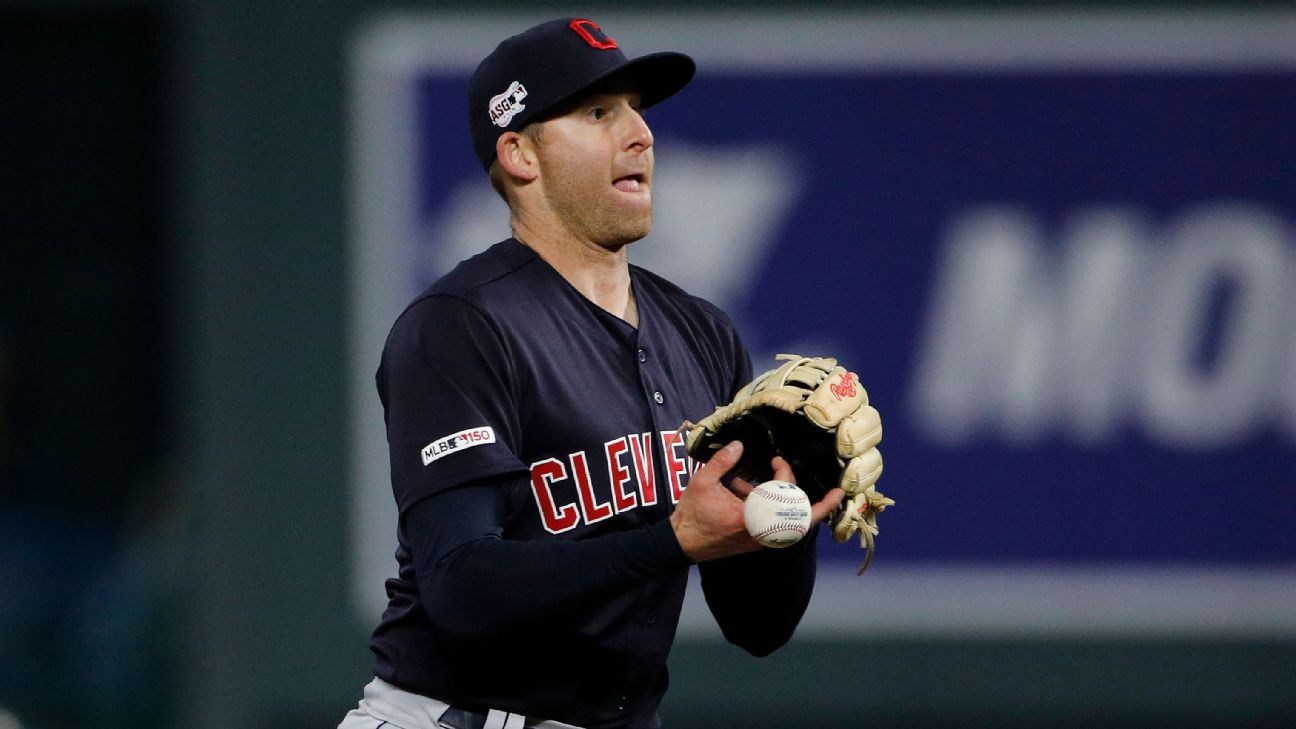
After being designated for assignment, Cleveland Indians utility man Brad Miller took a shot at the team.
"They acknowledge that it wasn't fair," he said. "But I'm just a player. I go out there and play my hardest and play for the guys next to me. Obviously, they don't want the best guys up here. So I'm just trying to take it somewhere else and see what we've got."
Miller, 29, was moved to make room for the return of All-Star second baseman Jason Kipnis from a calf strain. Miller's chief complaint appears to be that he was hitting .250 while the Indians are last in the league with a team batting average of .194.
Besides activating Kipnis, the Indians also could get fellow All-Star Francisco Lindor back soon. He was sent to Triple-A Columbus for a rehab assignment from an ankle injury.
Miller is a career .240 hitter with the Mariners, Rays, Brewers and Indians. He indicated that he understands that he was caught in a numbers game, but said he just wants a chance.
"I'm a player," Miller said. "I really enjoyed playing for Tito [Terry Francona]. That's why I'm frustrated. I want to be here. I like this group. It's a good team and I was hoping I'd be a part of it, but they have other plans.
"I think the writing was on the wall from the get-go. I just hope I can go somewhere else and get after it."
The Associated Press contributed to this report.
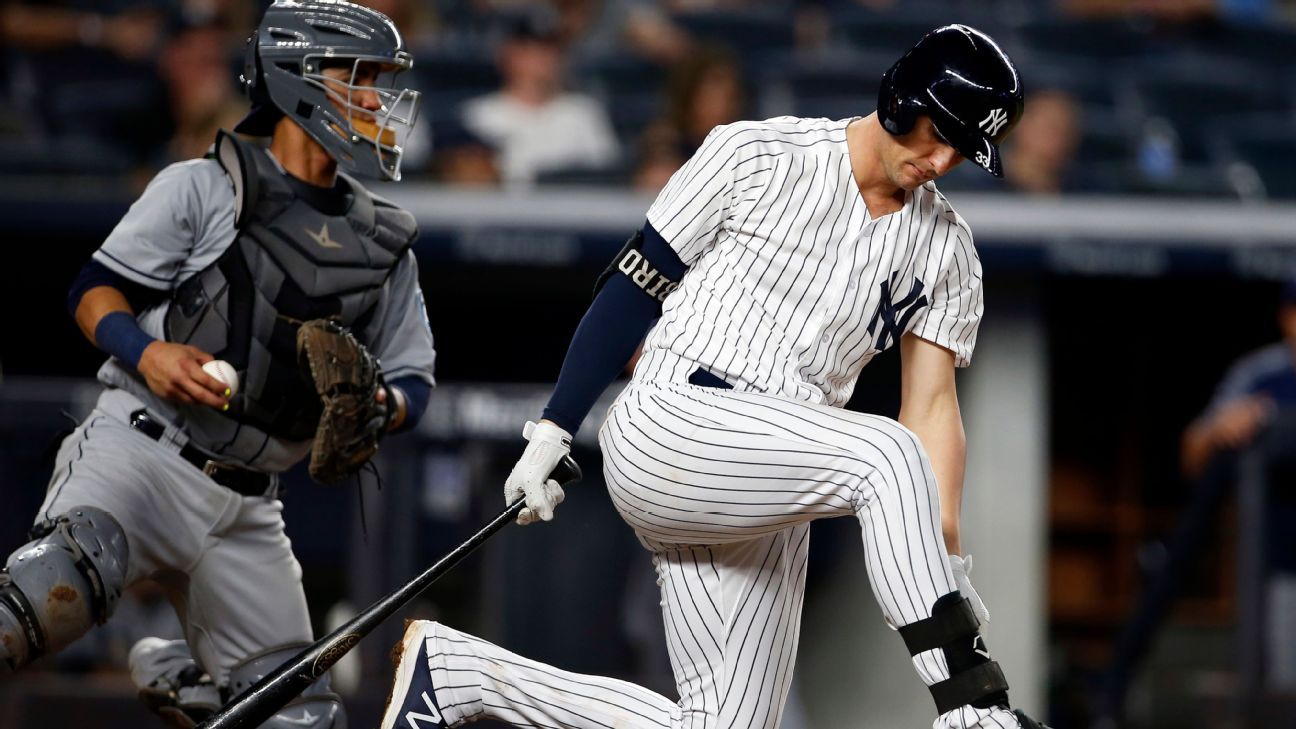
NEW YORK -- The banged-up New York Yankees added yet another player to the injured list Tuesday.
This time, it was Greg Bird, the oft-injured first baseman who has been struggling offensively. Bird was placed on the 10-day IL, retroactive to Sunday, with a left plantar fascia tear.
In a corresponding move, the Yankees called up first baseman Mike Ford from Triple-A Scranton/Wilkes-Barre and signed him to a major league contract.
It's unclear how long Bird will be out.
Outfielder Jacoby Ellsbury, who hasn't played in nearly two years, has been on the Yankees' IL since last season, due in part to his own plantar fascia issue. While continuing to rehab from that foot injury, Ellsbury was transferred Tuesday to the 60-day IL.
Luke Voit will be the Yankees' primary first baseman for the time being, with Ford largely serving as his backup. The Yankees also probably would feel comfortable platooning the two players in a first baseman/designated hitter situation, with Voit perhaps seeing the bulk of action in the DH role.
Of the 14 games he has appeared in this season, Voit has DHed nine times.
Ford, a New Jersey native, brings a hot bat to the Bronx after slugging five homers and 14 RBIs in 10 Triple-A games this season. He had a 1.364 OPS in that limited action with the RailRiders. The Princeton product has spent his entire career with the Yankees, getting signed as a undrafted free agent in 2013.
It's unclear exactly how Bird suffered the injury, but he was seen hobbling up the first-base line after beating out a ground ball against the White Sox on Saturday. He later scored as part of a three-run inning that powered the Yankees to a win.
Bird, who batted under .200 in limited action in each of the previous two seasons, is currently hitting .171 (6-for-35) with one homer and one RBI this season.
He has dealt with shoulder problems throughout his career and had surgery last spring on his right ankle after dealing with another injury to the same ankle the previous season.
With Bird now sidelined, the Yankees once again have a dozen players on their IL.
While starter CC Sabathia came off the IL to make a brilliant five-inning, one-hit season debut over the weekend, New York is still missing the likes of Giancarlo Stanton (left biceps strain), Miguel Andujar (small labrum tear), Troy Tulowitzki (left calf strain) and Gary Sanchez (left calf strain), among others.
Disappearing triples! Imploding bullpens! How baseball is different in 2019
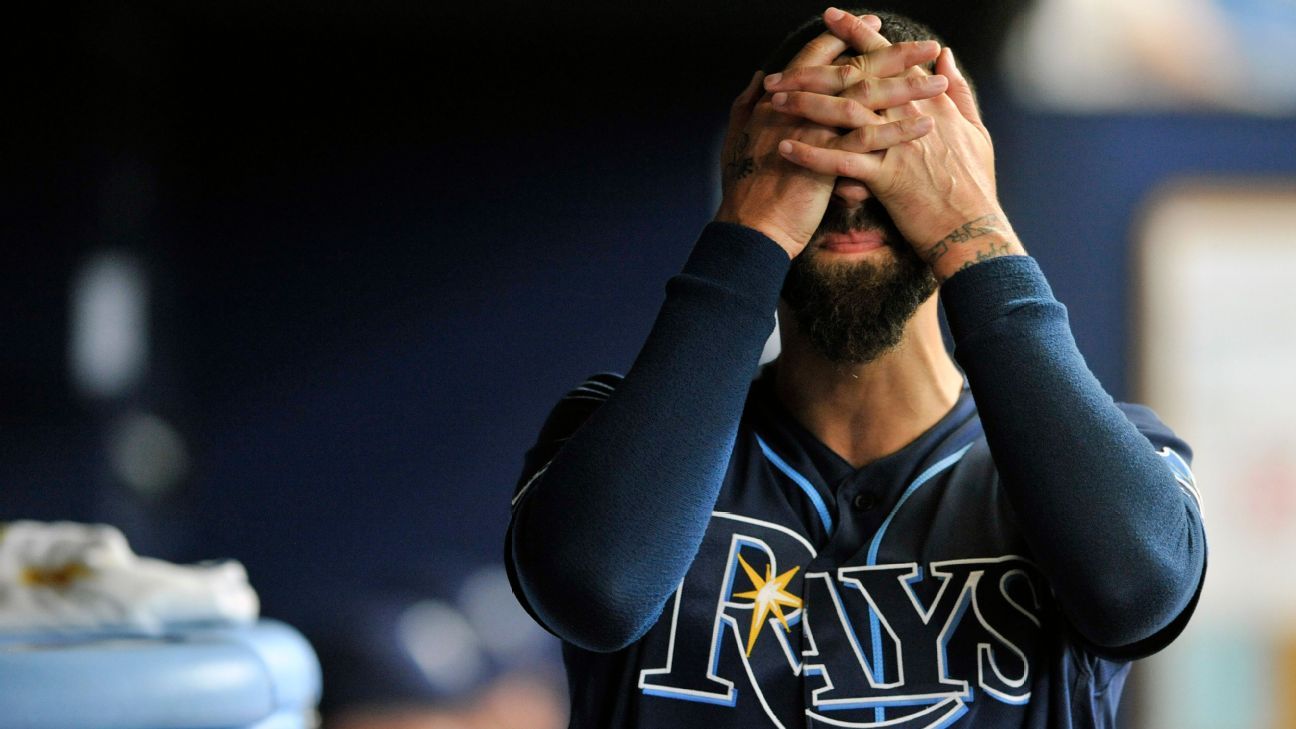
It is far too early to say the Red Sox are really in trouble, or Dan Vogelbach is really a star. It is not, on the other hand, too early to say we're really going to see yet another league record for strikeouts, and home runs are probably really returning to the juiced-ball levels of 2017.
In between, though, are a number of ways baseball in 2019 has been broadly different this year than it ever has been before. Sometimes these early-season shifts turn out to be flukes, or seasonal; sometimes, they bear out as real, substantive changes in how the game is played. We're roughly 10 percent of the way into the 2019 season, and we'll look at three of those early leaguewide anomalies to see how they fit into the historical trendlines; how April specifically affects them; and whether the best explanation is permanent change or something flukier.
1. Triples have disappeared
There have been 0.14 triples hit per team per game this season, which would be the lowest in history.
Where it fits in historical trends: The long-term trend -- since the 1920s -- for triples has been down, but the dips have been slow and irregular. In the 1920s, the average team tripled about once every two games; in the 1930s and 1940s, it dropped to once every three; in the 1950s through the early 1980s, it was about once every four; and then over the next three decades, it was once every five. Over the past two decades, triples have occasionally dropped further still, and the three lowest triple rates in history came in 2013 (0.16 per game), 2017 (0.16 again) and 2018 (0.17). If this season holds at 0.14 triples per game, it would be the lowest rate in history, about 150 triples fewer leaguewide than were hit last year.
But is it just April? It doesn't appear to be. April has actually been the most typical month of the season for triples. And early-April triple rates have historically matched late-April rates. So while one might speculate that runners would be more cautious on cold/wet days, that doesn't seem to affect anything broadly. Early April is a good indication for the rest of the season.
But is this really just about home runs or strikeouts? This is important, because almost every story these days is really just about home runs or strikeouts. Triples might be down because players are hitting fewer triples. But they might be down because players are hitting fewer balls, generally, meaning this could be just one of the many outcomes lost to extra third strikes.
So instead of looking at triples per game, we can look at triples per ball in play, and we can look at triples per double. As noted, triples have fluctuated a bit -- and declined a bit -- since the turn of the century, but that has been almost entirely caused by strikeouts. The rate of triples per ball in play has been incredibly steady, at 0.7 percent of balls in play. This could be the first year ever to drop below 0.6 percent:
Another way to look at it is examining the ratio of triples to doubles, which are the closest cousin to triples. There have been eight triples for every 100 doubles hit this year, which would also be an all-time low.
So triples are convincingly down this year, and it can be explained only partly by the two big changes in home run and strikeout rates. And, indeed, this goes counter to another recent trend, of more playing time going to young position players. (Triples peak in a player's early 20s.)
So it's real? If you can think of a way players get to third base and stop there -- stealing third, or sacrificing a teammate from second to third, or going from first to third on a single, or hitting a danged triple -- then it has probably become less frequent in the past few years. Rob Mains has recently written about this at Baseball Prospectus, with two hypotheses: Sabermetrics has shown that the risk of advancing from second to third on a contested play (or in exchange for an out) isn't worth it, by run-expectancy models; and fear of injuries has made runners more cautious, more station-to-station.
There's another good reason, too: Strikeouts and home runs! In a high-strikeout environment, teams are less likely to get the runner home from third base on a sacrifice fly or groundout. And in a high-homer era, there's less disadvantage to stopping at second, since a home run scores all baserunners equally. So, while the drop in triples isn't explicitly about strikeouts and home runs, it sort of is.
With all that said -- we're talking about maybe only 15 missing triples, compared to last year's rates. Triples are going to continue to be down relative to when you were in elementary school, but it's too early to say they'll continue to be down relative to last year.
2. Pitchers are wilder than ever
There have been 3.48 walks per game, 0.43 batters hit by pitches per game, and 0.39 wild pitches per game. The latter two would be the highest rates since 1900; the walks would be the highest since 2000.
Perhaps most significantly, all this wildness has led to (and/or resulted from) longer plate appearances, which have led to longer games: Despite pace-of-game reforms, the average nine-inning game in 2019 is on track to match the slowest in history, at 3 hours, 5 minutes -- five minutes longer than last year.
Where it fits in historical trends:
Hit batsmen had been fairly steady for about a century before ticking up in the mid-1990s and spiking in the mid-2000s. But that spike retreated until last year, when the league set a modern high at 0.4 HBP per game.
Wild pitches were fairly steady until a jump in the 1960s, and were then fairly steady for decades after that, but have inched continuously up this decade.
Walks peaked at the height of the steroid era but dropped a lot this decade (about 3 per game from 2011 to 2016), until the juiced ball came along. The 2017 and 2018 rates were high (3.26 and 3.23, respectively), but this year is much higher still.
But April? Yes, April is the busiest month for wildness: HBPs are generally 3 percent higher than the rest of the season, wild pitches 4 percent higher, and walks 6 percent higher. The first two weeks of the season are wilder still, and these per-game rates have already quieted down some since last week.
If we were to adjust each of these wildness measures down by 6 percent, then we'd still be on track for the new highs in HBPs (since 1900) and walks (since 2000), but the jumps would be less extreme and the chances of regression to normal levels would be more compelling.
But is it really just about home runs or strikeouts? Yeah. Even stipulating that there's a good chance all these wildness stats will regress to something in line with 2018 and 2017, there are clear ways pitchers have changed their approaches even more this year, to add strikeouts and to avoid home runs:
Fastball rates:
2010: 63.5 percent of all pitches
2018: 60.8 percent
2019: 58.7 percent
Inside pitches:
2010: 27.6 percent of all pitches
2018: 29.1 percent
2019: 30.1 percent
As Baseball Prospectus' Matt Trueblood has been documenting, full counts are way up this year, with 15.4 percent of plate appearances now reaching such a point. Pitches per plate appearance, at 3.95, are way up from last year's 3.90, which was itself a record. More pitches mean more opportunities for hit batsmen and wild pitches, of course. Beyond that, though, pitchers are showing clear intention here: Avoiding contact and working cautiously to get to the deep counts where a strikeout pitcher's advantage grows. This isn't really that pitchers are wild, but that they're choosing a wilder way of pitching.
So it's real? Basically. Although, as with triples, it's easier to say that baseball has definitely changed in the past few years than it has definitely changed this month. I'm extremely confident we'll see a new record for pitches per plate appearance this year. The rest will likely follow.
3. Relievers are bad
Relievers' ERA (4.44) is, collectively, higher than starters' ERA (4.33). Relievers have also allowed exactly the same OPS as starters.
Where it fits in historical trends: Through the 1950s, relievers were pretty much always worse than starters, and even into the mid-1970s it wasn't uncommon for relievers to collectively allow more offense than starters did. But that was a different era, when relievers were really more like backups -- the second string -- than they were a part of everyday baseball strategy. Since the relief era really took off in the late 1980s, relievers have always pitched considerably better than starters, not because they've been better pitchers but because they've been quality pitchers used in shorter stints and, usually, with the platoon advantage generally in their favor. (In other words: Starters are better, but relievers have the easier job.)
If this holds, it would be the first time since 1988 that relievers have allowed a higher ERA than starters did, or as high of an OPS. Indeed, from 1988 through 2017, there was only one season when relievers' ERA wasn't at least 5 percent lower than starters'.
But last year, relievers' ERA was just 3 percent lower than starters, and their OPS allowed was just 1 percent lower. This year, relievers' ERA is 3 percent higher than starters.
You'd have to go back to 1954 to find a year when starters were that much better than relievers.
But April? The gap between starters and relievers is smallest in April (and September), but smallest doesn't mean small. Since 1988, relievers' ERA has been about 6 percent better than starters' in March and April. The gap grows -- to about 8 percent -- in May through August, but even early in the season it is a real aberration to have starters outpitching relievers.
That said, weird things do happen in short stretches, and a reversal like this for a month isn't unprecedented. Starters outpitched relievers in April 2009, before things went back to normal the rest of the season. Also in 1997 and in 1994.
Home runs and strikeouts? Not exactly, but sort of. The crucial detail here, if this reversal turns out to be real and persistent, is relievers are throwing more innings than they ever have before, which dilutes the collective reliever pool. There have been 4.43 pitchers per game this year, which would be a record; relievers have thrown 41 percent of all innings, which would also be a record. There were 285 pitchers who appeared in relief during teams' first 12 games this season. There were 261 in the first dozen games of 2017 -- and it's safe to say those extra 24 are dragging down, not lifting up, the collective reliever stats. There were 232 relievers in the first 12 days of 2010. Dozens of pitchers have thrown relief innings this year who would probably have been in the minors most any other year.
Furthermore, we can't really say relievers are worse except in relation to starters, and starters have been the statistical beneficiaries of modern pitcher usage. Fewer and fewer starters are asked to face batters a third time in the game, to throw a pitch while exhausted, or to pace themselves to get through eight or nine innings. Each season, starters are able to pitch more like relievers -- at full tilt, basically. A big reason teams prefer to use their starters this way -- five innings and then out -- is they like their starters to pitch for strikeouts, and they don't like having tired starters in the game giving up home runs.
So it's real? It's probably not all the way real. There hasn't been a substantial increase in relief innings since last season, or in relievers used since last season, so it's hard to explain why there'd be such a substantial change in results since last season. The best bet is relievers will settle in to a level much like last year, when they allowed 3 percent fewer earned runs than starters. But that was a big change, an anomalous season matched only once in the previous 40 years. We wondered, at the end of the 2017 season, why five-inning starters weren't closing the gap on relievers, statistically. Then they did, a lot. This April is providing strong evidence that last year, at least, was real.

The 10-day Olympic Games athletics schedule includes nine morning in-stadium finals
The athletics timetable for the Tokyo 2020 Olympic Games has been published, with the 10-day schedule featuring a number of morning finals and the addition of the mixed 4x400m relay.
Competition will begin with the men’s 20km race walk on Friday July 31 and conclude with the men’s marathon on the final day of the Games, Sunday August 9.
The marathons will both start at 6am local time, with the women’s race taking place on day three, Sunday August 2. The men’s 50km race walk will begin at 5:30 on the penultimate morning, while the men’s and women’s 20km race walk events will start at 6am. The early starting times have been set “to give athletes the coolest and safest possible race conditions”.
Nine in-stadium finals will take place during the morning sessions, while the women’s 100m final will be on the evening of day two and the men’s on the evening of day three. The men’s 10,000m final is on the evening of day one, while the women’s is on the the last evening of action, on Saturday August 8.
The mixed 4x400m relay will be held on the evening of day two with the aim of allowing athletes the chance to also compete in the individual 400m events and the traditional 4x400m relay races if they wish, though the men’s 400m heats take place the next morning and both 400m hurdles competitions will be under way.
The decathlon and heptathlon events will be staged together in the same two-day period of August 5-6.
The full timetable can be downloaded here (times stated are local time).
“The Tokyo 2020 schedule is substantially different from our previous Olympic timetables, but will offer the vast majority of athletics fans attending the Games the opportunity to see Olympic medals being decided, with finals scheduled in 15 of the 17 sessions in the main stadium,” said IAAF competitions director Paul Hardy.
“Having finals in the morning, as requested by the International Olympic Committee, will enhance the visibility of athletics across all time zones.
“The stadium-based distance events remain in the evening sessions to reduce the risk of very hot conditions for our endurance athletes, while the road events will start as early as practicable in the morning.
“The new schedule also accommodates both the traditional doubles and the historic addition of the mixed 4x400m relay, the first time that athletics has combined the talents of both male and female athletes in one event at the Games.”
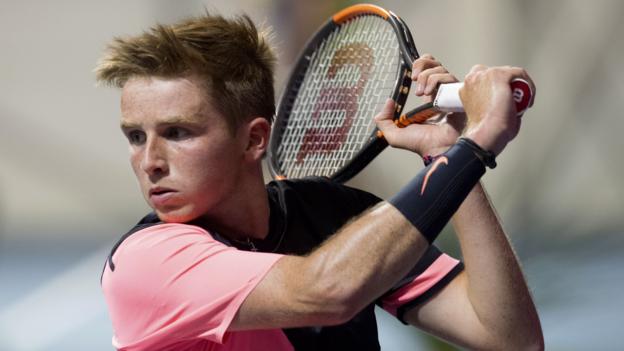
Glasgow will again host an ATP Challenger event this year, the Lawn Tennis Association has announced.
Singles and doubles events will take place at Scotstoun Sports Campus from 16-22 September.
Last year's inaugural event was attended by more than 3,000 spectators with Slovakia's Lukas Lacko winning the singles.
"Some of the best memories have been playing Davis Cup ties at home," said Scottish doubles player Jamie Murray.
"I am delighted to be working with the LTA and Glasgow Life on the planning and delivery of an ATP Challenger in Scotland later this year."
Murray, who has played a role in the planning of the event, added: "We hope to make this year's tournament more successful, providing a platform to inspire more young people in Scotland to take up our sport.
"I look forward to seeing everyone again in September."
Monte Carlo Masters: Kyle Edmund beaten by Diego Schwartzman in first round

British number one Kyle Edmund let an early lead slip as he was beaten in the first round of the Monte Carlo Masters by Diego Schwartzman.
World number 23 Edmund led Argentina's Schwartzman by a set and 3-0 but ultimately lost 4-6 6-3 6-1.
The 24-year-old won only one of the final 13 games against Schwartzman, who is one place below him in the world rankings.
Schwartzman will face either Jo-Wilfried Tsonga or Taylor Fritz next.
There were five breaks of serve in a scrappy opening set before Edmund converted his first set point.
The Briton broke Schwartzman at the first opportunity in the second set but Schwartzman won nine straight games to level the match and take an early third-set lead.
Edmund held serve for 1-3 and had a break point in the next game, but a missed backhand volley allowed Schwartzman to extend his lead.
Schwartzman, who reached the French Open quarter-finals in 2018, went on to serve out victory.
The two will face one another again in the men's doubles on Tuesday. Edmund and compatriot Neil Skupski are scheduled to play Schwartzman and Joao Sousa of Portugal from 14:00 BST.
British number two Cameron Norrie opens his singles campaign against Adrian Mannarino of France on the same day.
Rafael Nadal also begins his title defence on Tuesday against fellow Spaniard Roberto Bautista Agut. The match will be Nadal's first in over a month after he injured his knee at Indian Wells in March.

Since the formation of the World Table Tennis Championships 97 years ago, Canada has not as of yet been amongst the podium positions at the event but it has celebrated its fair share of success on the world stage.
In 1993 Johnny Huang finished third at the Men’s World Cup and nine years later he added a Men’s Singles silver medal to his name at the 2002 Commonwealth Games with Canada also securing Women’s Team bronze in Manchester. In 2014, the country collected its third table tennis medal at the Commonwealth Games, sealing Women’s Doubles bronze.
Looking to send a message to the world five years on from Glasgow 2014 Canada is placing its hopes in two ambitious athletes with Zhang Mo and Alicia Cote representing the country at the upcoming Liebherr 2019 ITTF World Table Tennis Championships in Budapest, Hungary from Sunday 21st to Sunday 28th April.
Four times North American singles champion, gold medallist at the 2011 Pan American Games and winner of the Pan American Cup in 2018, Zhang Mo is undoubtedly the leading name of Canadian table tennis at this current moment in time and is well experienced on the international circuit having appeared on the biggest of stages the sport has to offer.
She’ll be joined by Alicia Cote who is set to compete at the World Championships for a second occasion, having appeared in 2015. The very same year she was the youngest player to feature at the 2015 Pan American Games and will use her time in Budapest as preparation for this year’s edition of the Pan American Games in Lima, Peru.
With less than a week before the action gets underway in Budapest, Zhang Mo and Alicia Cote don’t have long to wait until they face off against the world’s finest.
Watch the world’s biggest stars battle it out for international glory by grabbing your tickets for the Liebherr 2019 ITTF World Table Tennis Championships:
Tickets
Düsseldorf final, possible fourth round clash?

It is just one of several intriguing contests possible in the fourth round; equally, Ma Long could face colleague Xu Xin, Germany’s Timo Boll could confront compatriot Dimitrij Ovtcharov and Vladimir Samsonov of Belarus could face any of them!
All have one factor in common, at some stage during their illustrious careers all have occupied the top spot on the world rankings.
Seeding is based on the world rankings for April; Fan Zhendong and Xu Xin occupy the top respective places, Timo Boll appears at no.5, Ma Long at no.11, Dimitrij Ovtcharov at no.12. Further down the order is Vladimir Samsonov at no.19, for seeding purposes one place higher, as the name of Lim Jonghoon, ranked no.17, does not appear on the Korea Republic entry.
Next in line to Xu Xin is colleague Lin Gaoyuan, followed by Japan’s Tomokazu Harimoto; they are ahead of Timo Boll. Korea Republic’s Lee Sangsu is listed at no.6, followed immediately by Brazil’s Hugo Calderano and Koki Niwa.
Any top eight name that advances to the fourth round (the last 16) could well facing Ma Long, the defending champion.
Main draw: men’s singles and women’s singles events
…………the first round comprises 128 players, matters proceeding on a knock-out basis
…………a total of 64 players are seeded and receive a direct entry to the first round, the remaining places are filled by 64 players from the qualification tournament
…………on Friday 19th April, players seeded no.17 to no.64 will be drawn at random into the appropriate positions in the draw
…………on Saturday 20th April, players seeded no.1 to no.16 will be draw into the appropriate positions in the draw
…………following the conclusion of the qualification tournament on Tuesday 22nd April, the players who emerged successful will be drawn into the 64 remaining places
Main draw: men’s doubles, women’s doubles, mixed doubles
…………the first round in each of the men’s doubles, women’s doubles and mixed doubles events comprises 64 pairs, matters proceeding on a knock-out basis
…………on Friday 19th April, pairs seeded no.1 to no.32 in each event will be drawn into the appropriate positions in the draw
…………following the conclusion of the qualification tournament on Tuesday 22nd April, the pairs who emerged successful will be drawn into the 32 remaining places
Qualification: men’s singles
…………in the first stage of proceedings there are 80 groups, in each group play being on an all-play-all basis
…………players finishing in first places in group no.1 to group no.48 advance to the main draw
…………players finishing in first places in group no.49 to group no.80 progress to a preliminary round; the preliminary round winners advance to the main draw
Qualification: women’s singles
…………in the first stage of proceedings there are 60 groups, in each group play being on an all-play-all basis
…………players finishing in first place in each group advance to the main draw
…………four “Lucky Losers” are drawn at random from the second placed players in each group in order to complete the 64 qualification places
Qualification: men’s doubles, women’s doubles, mixed doubles
…………throughout play takes place on a knock-out basis in all doubles events to determine the 32 qualifiers
…………a total of 101 pairs compete in the men’s doubles first stage, two rounds will be played
…………a total of 64 pairs compete in the women’s doubles first stage, one round will be played
…………a total of 112 pairs compete in the mixed doubles first stage, two rounds will be played
Shining performances first places against the odds

Vlada Voronina caused the biggest upset by beating Poland’s Aleksandra Michalak (11-7, 11-2, 8-11, 11-7); following close behind, in the closest match of the day, Emine Ernst accounted for Sweden’s Jennie Edvinsson 6-11, 12-10, 12-10, 8-11, 16-14). Not to be overshadowed, Liu Ru-Yun overcame Guatemala’s Lucia Cordero (11-5, 11-7, 11-13, 11-9).
Defeats for Aleksandra Michalak and Jennie Edvinsson; vitally, it was their only defeat of the day; second place and progress to the main draw was thus reserved. Alas for Lucia Cordero, she suffered a further reverse at the hands of Svetlana Dmitrienko (12-10, 11-7, 11-6) and thus had settle for third place, journey’s end. Svetlana Dmitrienko ended the day in runners up spot.
Surprises but not for the other leading names on initial stage duty. Chinese Taipei’s Yu Hsiu-Ting, England’s Denise Payet and Germany’s Sophia Klee reserved first places in their groups as expected, a situation that applied also to China’s Li Yuqi and Sweden’s Rebecca Muskantor.
First positions as anticipated; however, down the order there were unexpected top spots. Chinese Taipei’s Lee Wan-Hsuan, Tsai Yun-En and Chang Ju-Chia, also upset the order of merit to top their groups, as did Turkey’s Merve Cansu Demir, England’s Charlotte Bardsley and China’s Zhang Xiaoting.
The junior girls’ singles event will be played to a conclusion on Tuesday 16th April.












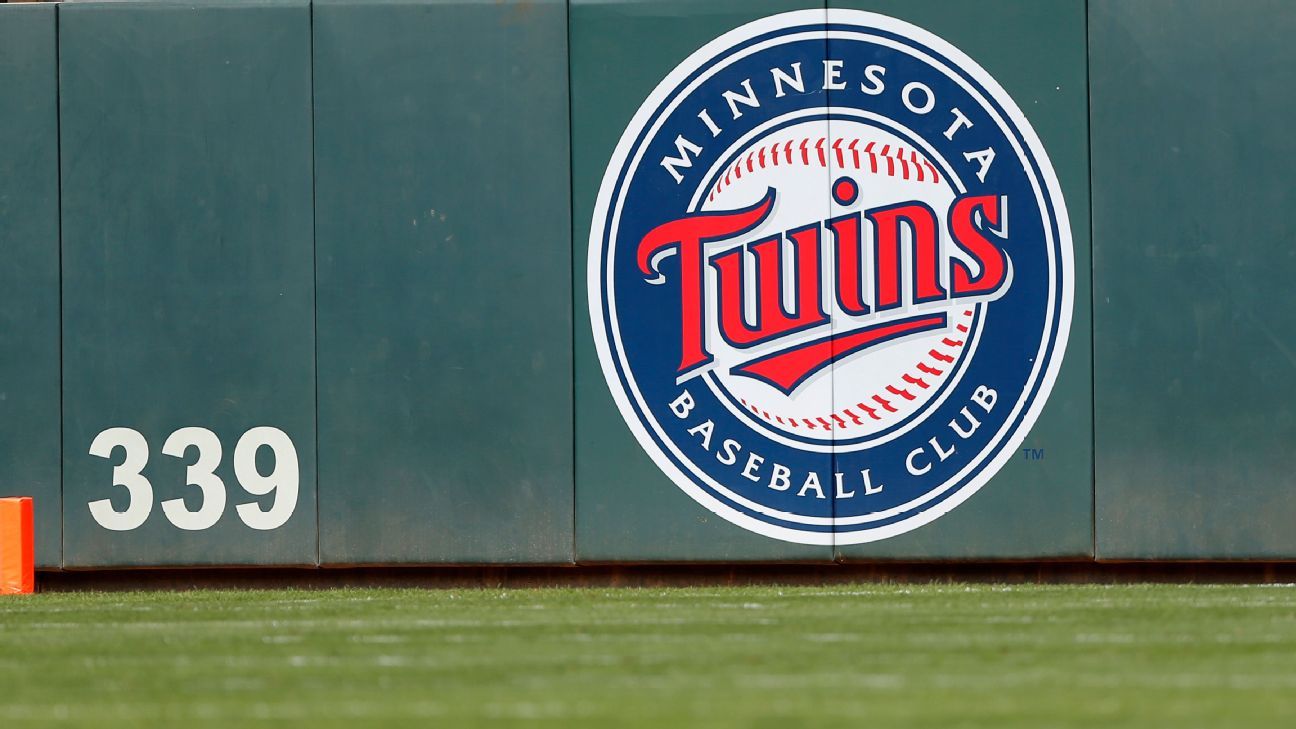


 Phone: (800) 737. 6040
Phone: (800) 737. 6040 Fax: (800) 825 5558
Fax: (800) 825 5558 Website:
Website:  Email:
Email: 






